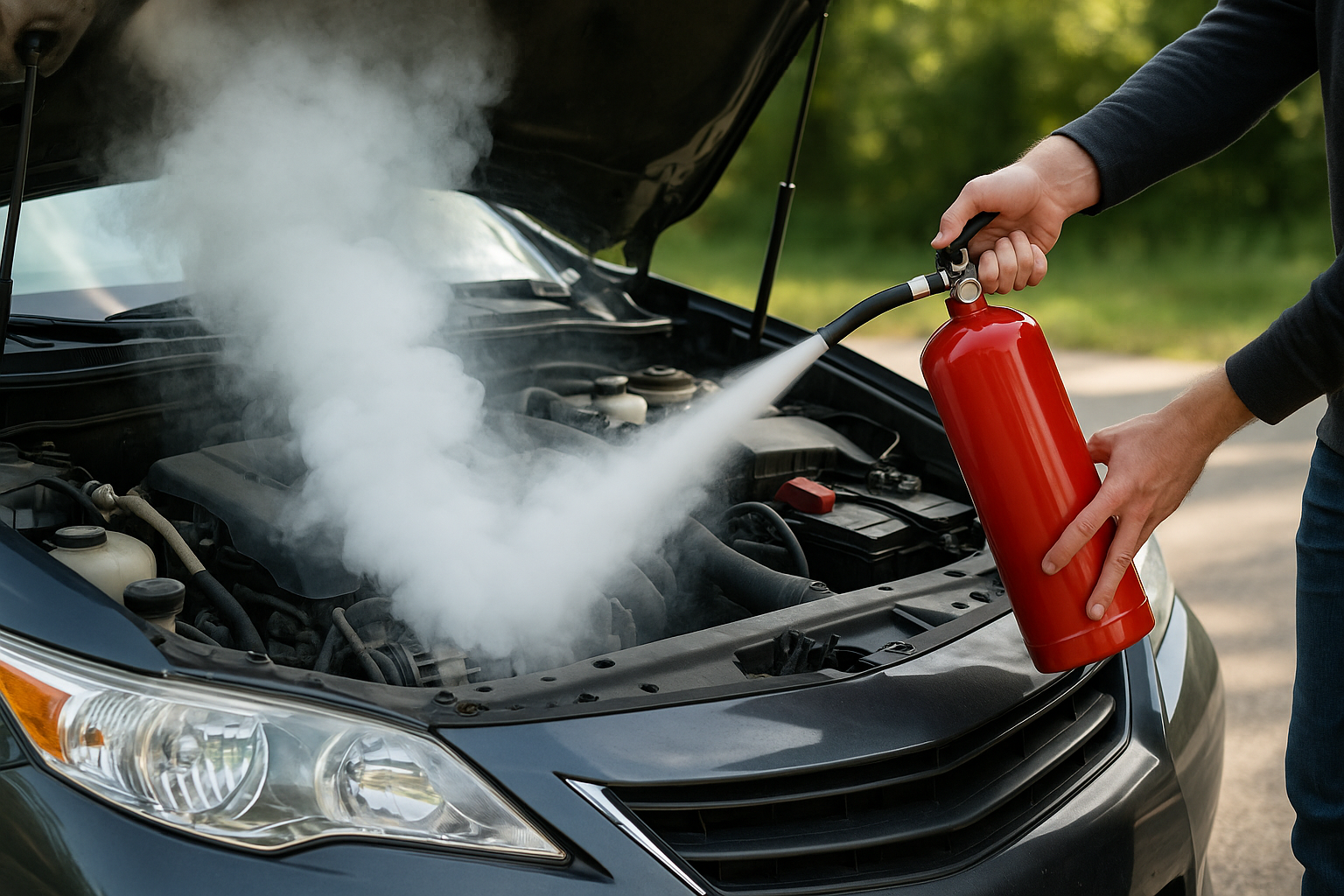Car fires, though relatively rare, can be devastating and dangerous if not prevented or handled correctly. By understanding car fire prevention strategies and following proper vehicle fire safety protocols, you can reduce the risk of fire and react swiftly in an emergency. This guide covers maintenance tips, warning signs, and emergency response steps to keep you and your passengers safe.
1. Key Causes of Vehicle Fires
Understanding what typically ignites a car fire is the first step toward prevention:
- Mechanical Failures: Leaking fuel or oil onto hot engine components.
- Electrical Shorts: Damaged wiring, faulty alternators, or loose battery connections.
- Overheating Catalytic Converters: Running rich fuel mixtures can overheat the exhaust system.
- Aftermarket Modifications: Improperly installed performance upgrades or audio systems.
2. Car Fire Prevention Tips
Adopt these car fire prevention measures as part of your routine maintenance:
2.1 Regular Inspections
- Check for fuel or oil leaks under the hood and chassis.
- Inspect hoses and belts for cracks or wear that could lead to fluid spray.
- Have your cooling system serviced to avoid overheating.
2.2 Electrical System Care
- Ensure battery terminals are clean, tight, and free of corrosion.
- Verify that all aftermarket wiring is routed away from heat sources and secured properly.
- Replace frayed or exposed wires immediately to prevent shorts.
2.3 Safe Fuel Handling
- Avoid carrying extra fuel containers in passenger compartments.
- Refuel with the engine off and avoid overfilling to minimize spills.
- Store spare gasoline only in approved, sealed containers outside the passenger area.
2.4 Mindful Modifications
- Use professional installers for performance parts and electrical upgrades.
- Choose components rated for automotive use and appropriate amperage.
- Verify that exhaust and turbo systems have adequate heat shielding.
3. Recognizing Warning Signs
Early detection is critical for vehicle fire safety:
- Burning Smells: Chemical or rubber odors may indicate overheating or melting insulation.
- Smoke: White smoke from the engine bay or dark smoke near the exhaust.
- Warning Lights: Battery, oil pressure, or temperature lights illuminated on the dashboard.
- Unusual Noises: Hissing (leaks), popping (electrical arcing), or ticking (fluid hitting hot parts).
4. Emergency Response Steps
If you suspect your vehicle is on fire, follow these emergency response steps immediately:
4.1 Pull Over Safely
- Activate your hazard lights and slow down gradually.
- Pull off the road to a clear, level area away from traffic and structures.
- Turn off the engine and engage the parking brake.
4.2 Evacuate Passengers
- Instruct everyone to exit the vehicle on the side away from traffic.
- Move at least 100 feet away and stay upwind to avoid smoke inhalation.
- Do not attempt to retrieve personal belongings.
4.3 Call for Help
- Dial 911 immediately and provide your location, vehicle description, and fire size.
- Alert highway patrol or emergency services if you are on a major road or highway.
4.4 Use a Fire Extinguisher (If Safe)
- Only use a Class B/C (dry chemical) extinguisher rated for flammable liquids and electrical fires.
- Maintain a safe distance (6–10 feet) and aim at the fire’s base.
- Discharge in short bursts and back away if the fire intensifies.
5. After the Incident
Once the fire is out and professionals have cleared the scene:
- Have your vehicle towed to a qualified repair facility for a full inspection.
- Document damage for insurance and replacement purposes.
- Review what triggered the fire to prevent future incidents.
Conclusion
Effective car fire prevention relies on proactive maintenance and awareness of potential hazards. By following these guidelines for vehicle fire safety and knowing the proper emergency response steps, you can protect yourself, your passengers, and your investment from the dangers of automotive fires.
